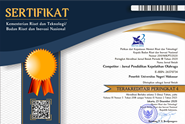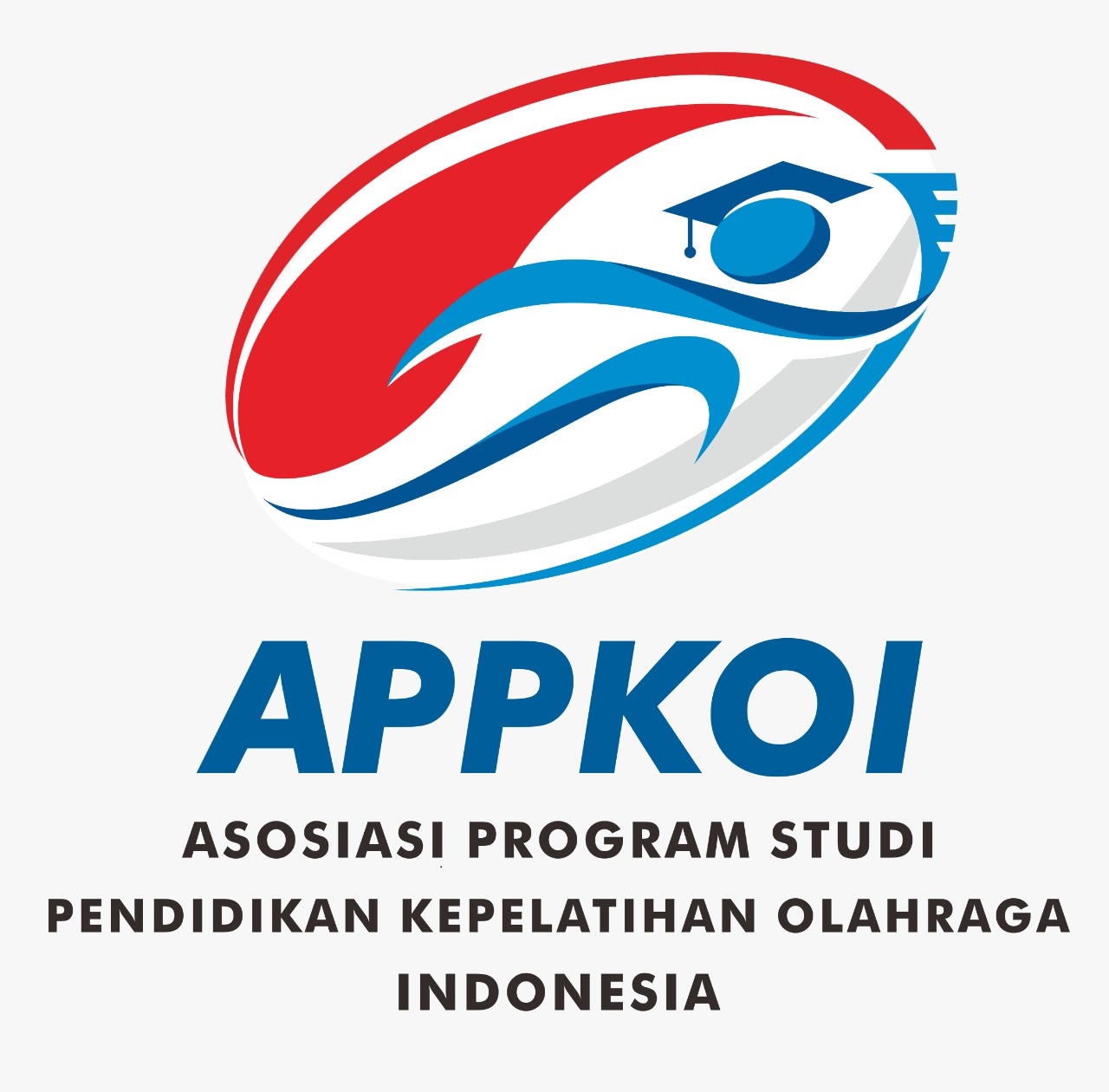Motor Skills Increase In The Learning Model Of Circuit Games
(1) Universitas Negeri Surabaya
(2) Universitas Negeri Surabaya
(3) Universitas Negeri Surabaya
(*) Corresponding Author
DOI: https://doi.org/10.26858/cjpko.v15i2.46928
Abstract
This study aims to prove the effect of the circuit games learning model on students' motor skills through the motor fitness test instrument. Motoric abilities start from basic locomotor and non-locomotor movements to the occurrence of manipulative movements in students. Motoric abilities are thought to be able to develop students' movement and physical abilities. 30 students of SDN Kendalbulur I were selected consecutively to take part in the study using the circuit games learning model experiment. The research instrument used the motor fitness test. The statistical test uses an influence test using the pre and post-test format. The results showed that all motor fitness test items experienced an increase in value before and after the circuit games learning model was implemented (p <0.05). This shows that the motor skills of students have increased after learning is done. Recommendations from the results of the research are that PJOK teachers can apply game-based learning models, especially in circuit games. Furthermore, other game-based learning models are studied to be able to complement the learning model of circuit games.
Keywords
Full Text:
PDFReferences
Arie Paramitha, M. V., & Sutapa, P. (2019). Pengembangan Model Pembelajaran Berbasis Permainan Sirkuit Untuk Meningkatkan Motorik Halus Anak Usia 4-5 Tahun. Jurnal Golden Age, 3(01), 1. https://doi.org/10.29408/goldenage.v3i01.1336
Badan Penelitian dan Pengembangan Kesehatan. (2013). Riset Kesehatan Dasar (RISKESDAS) 2013. Laporan Nasional 2013, 1–384. https://doi.org/1 Desember 2013
Cairney, J., Kwan, M. Y. W., Velduizen, S., Hay, J., Bray, S. R., & Faught, B. E. (2012). Gender, perceived competence and the enjoyment of physical education in children: A longitudinal examination. International Journal of Behavioral Nutrition and Physical Activity, 9. https://doi.org/10.1186/1479-5868-9-26
de Bruijn, A. G. M., Mombarg, R., & Timmermans, A. C. (2022). The importance of satisfying children’s basic psychological needs in primary school physical education for PE motivation, and its relations with fundamental motor and PE-related skills. Physical Education and Sport Pedagogy, 27(4), 422–439. https://doi.org/10.1080/17408989.2021.1906217
Diyono, D. (2019). Hubungan Antara Indeks Massa Tubuh Dengan Motorik Kasar Pada Anak Usia 8–10 Tahun. Jurnal Fisioterapi Dan Rehabilitasi, 3(2), 34–40. https://doi.org/10.33660/jfrwhs.v3i2.73
Ensrud-Skraastad, O. K., & Haga, M. (2020). Associations between Motor Competence, Physical Self-Perception and Autonomous Motivation for Physical Activity in Children. Sports, 8(9). https://doi.org/10.3390/sports8090120
Fedewa, A. (2011). The Effects of Physical Activity and Physical Fitness on Children’s Achievement and Cognitive Outcomes: A Meta-Analysis. Research Quarterly for Exercise and Sport, 82(3). https://doi.org/10.5641/027013611x13275191444107
Gholy, M. S., Sumardi, S., & Hadi, S. R. (2022). Pengembangan Model Pembelajaran PJOK Melalui Program SIBBER Untuk Meningkatkan Kebugaran Jasmani Berkarakter Sportivitas. JOSSAE Journal of Sport Science and Education, 134–145. https://doi.org/10.26740/jossae.v6n2.p134-145
Haapala, E. A. (2013). Cardiorespiratory fitness and motor skills in relation to cognition and academic performance in children - A review. In Journal of Human Kinetics (Vol. 36, Issue 1, pp. 55–68). https://doi.org/10.2478/hukin-2013-0006
Hadi, R. F., Afriwardi, A., & Jurnalis, Y. D. (2015). Gambaran Obesitas pada Siswa Sekolah Dasar di SD Pertiwi dan SD Negeri 03 Alai Padang. Jurnal Kesehatan Andalas, 4(1). https://doi.org/10.25077/jka.v4i1.230
Han, A., Fu, A., Cobley, S., & Sanders, R. H. (2018). Effectiveness of exercise intervention on improving fundamental movement skills and motor coordination in overweight/obese children and adolescents: A systematic review. In Journal of Science and Medicine in Sport (Vol. 21, Issue 1, pp. 89–102). https://doi.org/10.1016/j.jsams.2017.07.001
Hillman, C. H., Buck, S. M., Themanson, J. R., Pontifex, M. B., & Castelli, D. M. (2009). Aerobic Fitness and Cognitive Development: Event-Related Brain Potential and Task Performance Indices of Executive Control in Preadolescent Children. Developmental Psychology, 45(1), 114–129. https://doi.org/10.1037/a0014437
Hillman, C. H., & Schott, N. (2013). Fitness and cognitive performance in childhood. Zeitschrift Fur Sportpsychologie, 20(1). https://doi.org/10.1026/1612-5010/a000085
Kaharina, A. (2015). Kemampuan Motorik Siswa Kelas IV Sekolah Dasar Negeri Gugus VIII Di Kecamatan Depok Kabupaten Sleman Yogyakarta. Jurnal Pendidikan Jasmani Kesehatan Dan Rekreasi, 1–91.
Komaini, A. (2017). Peningkatan Keterampilan Gerak Dasar (Fundamental Motor Skills) Anak Melalui Pendekatan Bermain Murid Taman Kanakkanak Kota Padang. Jurnal Sains Keolahragaan Dan Kesehatan, 2(2), 54. https://doi.org/10.5614/jskk.2017.2.2.6
Lambrinou, C. P., Androutsos, O., Karaglani, E., Cardon, G., Huys, N., Wikström, K., Kivelä, J., Ko, W., Karuranga, E., Tsochev, K., Iotova, V., Dimova, R., De Miguel-Etayo, P., Gonzalez-Gil, E. M., Tamás, H., Jancsó, Z., Liatis, S., Makrilakis, K., Manios, Y., … Tong, M. (2020). Effective strategies for childhood obesity prevention via school based, family involved interventions: A critical review for the development of the Feel4Diabetes-study school based component. In BMC Endocrine Disorders (Vol. 20). https://doi.org/10.1186/s12902-020-0526-5
Launder, A., & Piltz, W. (2013). Play practice: Engaging and developing skilled players from beginner to elite. In Jurnal Akademik Universitas Asia Timur (Vol. 4, Issue 1).
Lees, C., & Hopkins, J. (2013). Effect of aerobic exercise on cognition, academic achievement, and psychosocial function in children: A systematic review of randomized control trials. In Preventing Chronic Disease (Vol. 10, Issue 10). https://doi.org/10.5888/pcd10.130010
Mamesah, E. D. (2019). Gerak Dasar Multilateral Anak Usia Dini 3-6 Tahun. Motion: Jurnal Riset Physical Education, 10(1), 46–56. https://doi.org/10.33558/motion.v10i1.1792
Moradi, A., Damirchi, E. S., Narimani, M., Esmaeilzadeh, S., Dziembowska, I., Azevedo, L. B., & Do Prado, W. L. (2019). Association between physical and motor fitness with cognition in children. Medicina (Lithuania), 55(1). https://doi.org/10.3390/medicina55010007
Oktaria, A. D., & Andika, W. D. (2022). Identifikasi Keterampilan Gerak Manipulatif Anak Usia 6-7 Tahun Selama Masa Pandemi Covid- 19. Journal of Early Childhood and Character Education, 2(1), 17–28. https://doi.org/10.21580/joecce.v2i1.10089
Pranawati, N. (2019). Pengembangan Permainan Sportshall Circuit Games Untuk Meningkatkan Gerak Dasar Lokomotor Dan Enjoyment Pada Siswi Sekolah Dasar. Surabaya: Tesis UNESA.
Rahma, A., & Kastrena, E. (2020). Peningkatan Kemampuan Gerak Manipulatif Melalui Permainan Bowling Botol. MAENPO, 9(2), 48. https://doi.org/10.35194/jm.v9i2.908
Riswandi, F. N. (2021). Peningkatan Kemampuan Motorik Kasar melalui Pengembangan Model Permainan Sirkuit Anak Usia 5-6 Tahun. Jurnal PG-PAUD Trunojoyo : Jurnal Pendidikan Dan Pembelajaran Anak Usia Dini, 8(1), 66–78. https://doi.org/10.21107/pgpaudtrunojoyo.v8i1.10233
Sakuragi, S., Abhayaratna, K., Gravenmaker, K. J., O’reilly, C., Sri Kusalanukul, W., Budge, M. M., Telford, R. D., & Abhayaratna, W. P. (2009). Influence of adiposity and physical activity on arterial stiffness in healthy children the lifestyle of our kids study. Hypertension, 53(4), 611–616. https://doi.org/10.1161/HYPERTENSIONAHA.108.123364
Saputra, R., & Wellis, W. (2020). Pengaruh Permainan Sirkuit Dengan Pos Terhadap Kebugaran Jasmani Siswa Di Sekolah Dasar Negeri 07 VII Koto Bisati Sungai Sariak Kabupaten Padang Pariaman. Jurnal Stamina, 3, 667–674.
Siegrist, M., Lammel, C., Haller, B., Christle, J., & Halle, M. (2013). Effects of a physical education program on physical activity, fitness, and health in children: The JuvenTUM project. Scandinavian Journal of Medicine and Science in Sports, 23(3), 323–330. https://doi.org/10.1111/j.1600-0838.2011.01387.x
Suryamulyawan, K. A., & Arimbawa, I. M. (2019). Prevalensi dan karakteristik obesitas pada anak di Sekolah Dasar Saraswati V Kota Denpasar tahun 2016. Intisari Sains Medis, 10(2). https://doi.org/10.15562/ism.v10i2.393
Wati, I. D. P., Kushartanti, W., & Susilo, J. (2011). Kemampuan motorik kasar siswa sekolah dasar penderita obesitas. Jurnal Gizi Klinik Indonesia, 8(2), 87. https://doi.org/10.22146/ijcn.17773
Wulan, D. S. A. (2015). Peningkatan Kemampuan Gerak Lokomotor Melalui Permainan Lari Estafet Modifikasi. Jurnal Pendidikan Usia Dini, 1(9), 163–180. https://media.neliti.com/media/publications/117781-ID-peningkatan-kemampuan-gerak-lokomotor-me.pdf
Yeni, H. O., & Surahman, F. (2019). Hubungan Status Gizi Terhadap Kemampuan Motorik Di Sd Negeri 17 Koto Iv Aur Malintang Kabupaten Padang Pariaman. Refleksi Edukatika : Jurnal Ilmiah Kependidikan, 9(2). https://doi.org/10.24176/re.v9i2.3021
Yulifri, Y., Nurini, N., Asnaldi, A., & Umar, A. (2019). Studi Kemampuan Motorik Siswa kelas V Sekolah Dasar Negeri 03 Ikur Koto Kecamatan Koto Tangah. Jurnal MensSana, 4(2), 148. https://doi.org/10.24036/jm.v4i2.98
Article Metrics
Abstract view : 76 times | PDF view : 9 timesRefbacks
- There are currently no refbacks.
Copyright (c) 2023 Palupi Ardanari, Nurhasan Nurhasan, Abdulrahman Syam Tuasikal

This work is licensed under a Creative Commons Attribution 4.0 International License.
COMPETITOR IS LICENSED BY :
 COMPETITOR is licensed under a Creative Commons Attribution 4.0 International License.
COMPETITOR is licensed under a Creative Commons Attribution 4.0 International License.
COMPETITOR EDITORIAL LOCATION :
![]() Kampus FIK Banta Bantaeng, Jalan Wijaya Kusuma Nomor 14, Rappocini, Makassar, Postal Code 90222
Kampus FIK Banta Bantaeng, Jalan Wijaya Kusuma Nomor 14, Rappocini, Makassar, Postal Code 90222
COMPETITOR IS INDEXED BY















